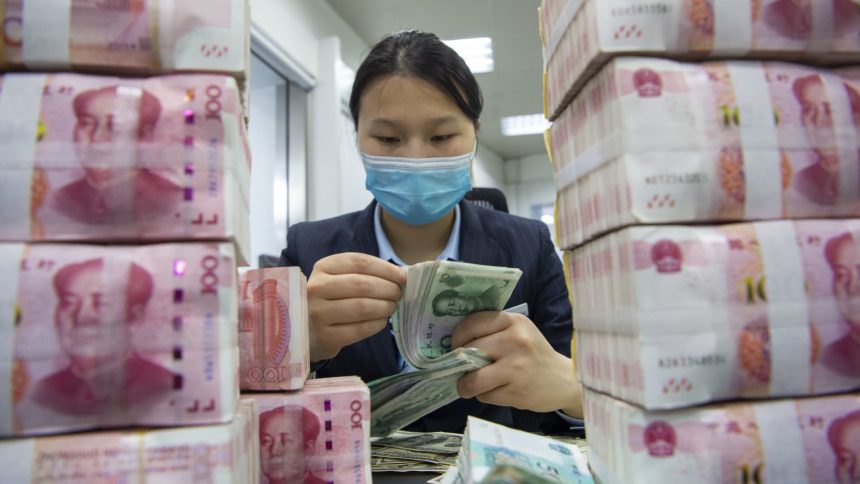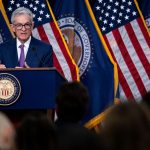China and the U.S. have a complicated economic relationship: competitive but codependent. But as tensions between Beijing and Washington rise, U.S. companies targeting China for future growth are facing strong headwinds. Just consider three core holdings in the portfolio: Apple , Starbucks , and Nvidia . All three companies maintain strong ties to the world’s second-largest economy. Nvidia generates 21% of its overall revenue from Mainland China, while Apple gets 19%, and Starbucks 9%. More importantly, all view China’s growing middle class as a still relatively untapped market for its products. And in the case of Apple, the place where most of its products are now made. But there’s no denying the in-country competition is heating up — a trend that has been intensified by the leaders of both countries. Trump-era export controls, tariffs on Chinese goods, and President Joe Biden’s focus on tech, specifically restricting certain U.S. investment in Chinese entities like semiconductors and restricting the export of cutting-edge AI chips, have all contributed. Meanwhile, Xi Jinping, president of the People’s Republic, continues to push for China’s economic independence — especially when it comes to tech. A sluggish economic recovery from the Covid pandemic lockdowns has also made local brands more attractive to deal-hungry consumers. Competition for the iPhone heats up For Apple, that has meant a more saturated smartphone market, with domestic players like Huawei spin-off Honor, Oppo and Vivo offering cheaper alternatives to its flagship iPhone. Sales for the iPhone dropped 30% year over year in early 2024, according to Jefferies last month. Sales for rivals such as Huawei have “remained much stronger,” the analysts wrote. In Apple’s December quarter , China was the weak spot, down 13% and coming in short of expectations. At the state level, media reports of Chinese government iPhone bans emerged last year. Although Chinese officials have denied these claims, the mega-cap stock shed a whopping $200 billion in market value amid a two-day sell-off in early September. Shares have since pared these losses. To be clear, Apple is still winning in China . The International Data Corporation (IDC) recently said that the iPhone captured a record market share of 17.3% in 2023, but Chinese providers are catching up fast. Honor, for example, came in an extremely close second at 17.1% last year. Apple management is adapting. That includes expanding its business into India, where it opened two retail stores last year. CEO Tim Cook previously told CNBC that the world’s most populous country was a “huge opportunity” for the firm. Plus, manufacturers of the iPhone like Foxconn have started operations in India as well. The shift not only allows Apple to grab more users in a less saturated market but also diversifies its supply chain. We maintain our conviction that you need to own Apple and not trade it, given the company’s stellar fundamentals. Starbucks vs Luckin Coffee China is Starbucks’ second largest market after the U.S., with more than 6,500 stores and 60,000 staff in the mainland region. Chinese consumers have recently turned away from international players for lower-priced options. Xiamen-based Luckin Coffee, for example, overtook Starbucks in market share in China during 2023, with double the retail locations there. Starbucks still posted a 10% increase in comparable store sales for China. But that missed analysts’ estimates of a 17% gain. CEO Laxman Narasimhan chalked the performance up to a “more cautious consumer,” given the country’s slower-than-expected economic recovery. Starbucks remains committed though. Management said in September that the company would spend $220 million on a new Chinese coffee manufacturing facility, making it Starbucks’ largest international investment to date. The company is also making clear strides to turn around the business overseas, with various initiatives to draw Chinese consumers back in. As a result, we maintained our 1, or buy-equivalent rating, on shares but cut our price target to $115 from $125 apiece. New pressure on Nvidia? In the last two years, Washington has issued export controls that limit the ability of Chinese companies to buy advanced tech, such as certain kinds of semiconductor chips, from U.S. businesses. This was in a bid to keep China’s military from gaining access to our high-end tech. China is also trying to win market share in the semiconductor sector. Huawei, in particular, sees a window open to do so as the U.S. curbs sales of Nvidia’s high-performance AI chips. China is also reportedly slated to launch a new state-backed $40 billion investment fund for the chip industry. Tech behemoths Alibaba and Tencent said they’d order far fewer of Nvidia’s more expensive chips in 2024. However, Nvidia still dominates the AI chip market in China, and it’s difficult to see its rivals catching up anytime soon. The company has twice re-engineered chips for the Chinese market to comply with U.S. rules. Even without China, however, demand is great elsewhere. Massive tech players like Meta Platforms are willing to spend billions on Nvidia’s GPUs. (Jim Cramer’s Charitable Trust is long AAPL, META, NVDA, SBUX. See here for a full list of the stocks.) As a subscriber to the CNBC Investing Club with Jim Cramer, you will receive a trade alert before Jim makes a trade. Jim waits 45 minutes after sending a trade alert before buying or selling a stock in his charitable trust’s portfolio. If Jim has talked about a stock on CNBC TV, he waits 72 hours after issuing the trade alert before executing the trade. THE ABOVE INVESTING CLUB INFORMATION IS SUBJECT TO OUR TERMS AND CONDITIONS AND PRIVACY POLICY , TOGETHER WITH OUR DISCLAIMER . NO FIDUCIARY OBLIGATION OR DUTY EXISTS, OR IS CREATED, BY VIRTUE OF YOUR RECEIPT OF ANY INFORMATION PROVIDED IN CONNECTION WITH THE INVESTING CLUB. NO SPECIFIC OUTCOME OR PROFIT IS GUARANTEED.
Read the full article here




